Solana's on-chain metrics (SOL) are recording the most impressive results in recent weeks. However, while the ecosystem is lively, large investors seem less eager to stay and celebrate.
On one hand, Solana is breaking records in network usage; on the other hand, whales holding large amounts of SOL are quietly withdrawing. Is this a healthy 'capital rotation', or a sign that the 'smart money' group is seeking shelter?
Solana accelerates on-chain, but whales quietly offload their holdings.
According to data from SolanaFloor, in July, the Solana network achieved a record high in the number of non-voted monthly transactions. The average actual transaction processing speed (TPS) reached 1,318 TPS – the highest ever.
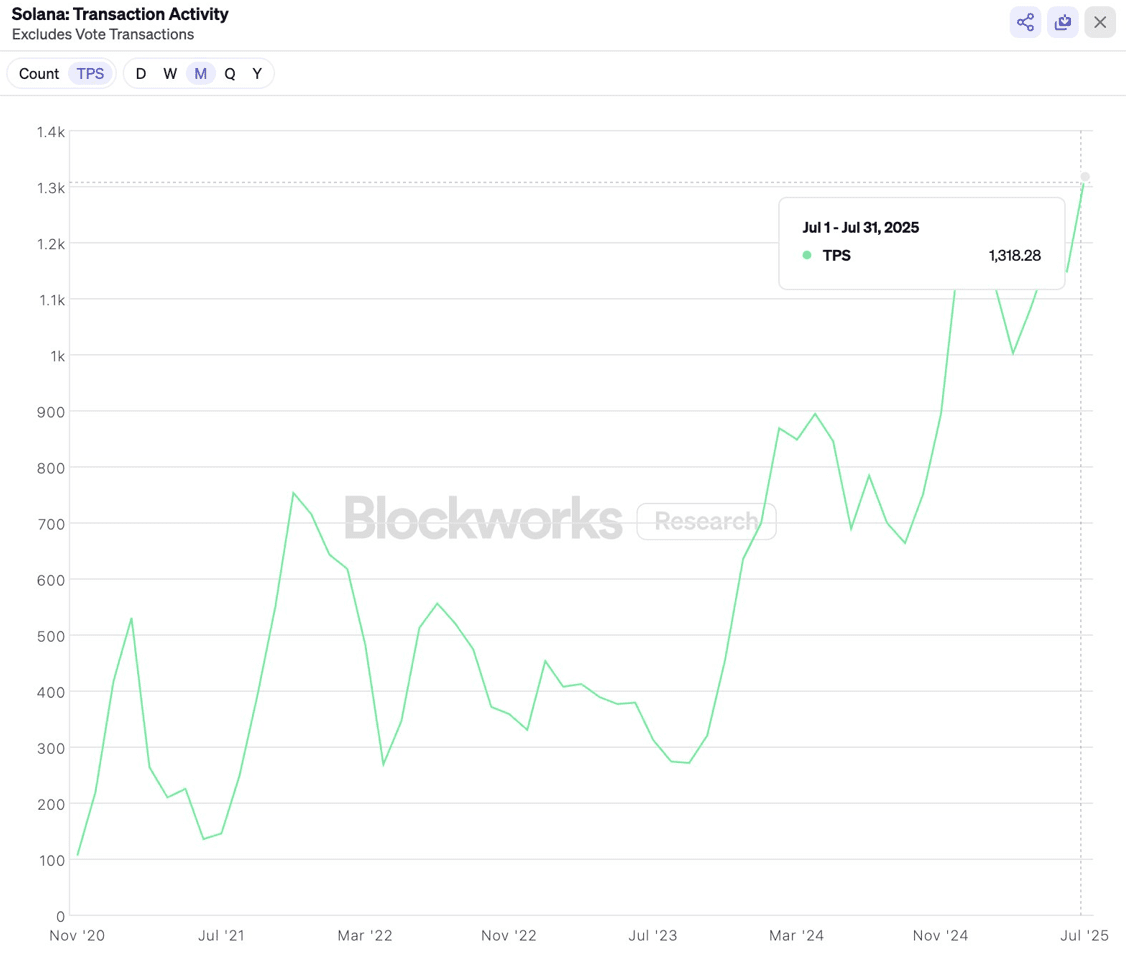
At the same time, data from DeFiLlama shows that the Total Value Locked (TVL) measured in native SOL tokens is currently at its highest level in over three years. This indicates that both users and DeFi protocols are tending to stay longer with the network.
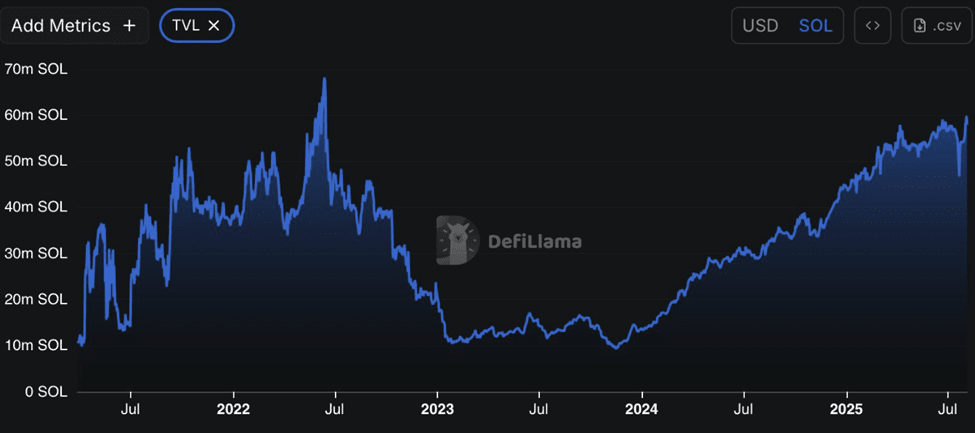
However, behind the scenes, many whales are unstaking millions of USD SOL and transferring to Binance. The platform Lookonchain has discovered that Galaxy Digital just unstaked 250,000 SOL (equivalent to 40.7 million USD) and transferred to Binance today (6/8).
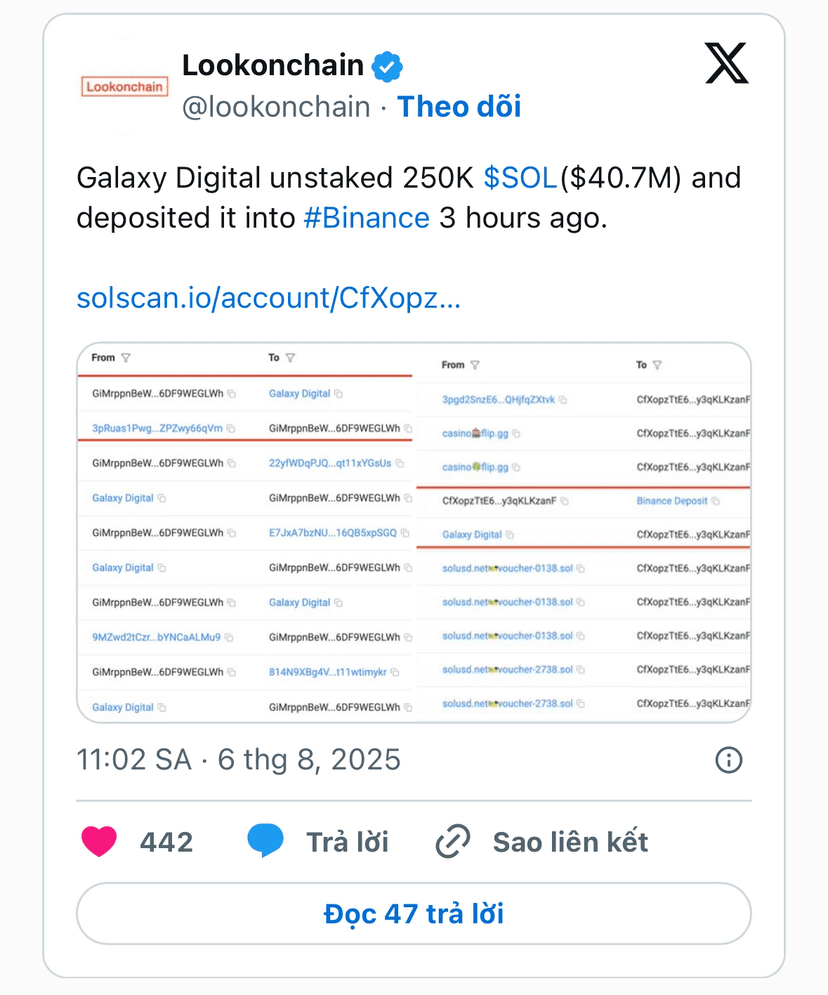
Another whale, tracked by Onchain Lens, also just unstaked 4.9 million USD SOL after two months of inactivity. After four years of staking, this address has quietly transferred more than 30 million USD SOL to Binance in recent months.
Whales withdraw as Hyperliquid takes the spotlight from Solana.
Despite a strong increase in on-chain activity, Solana's token price has not recorded many breakthroughs. Since the beginning of the year, SOL's price has dropped nearly 30%, while other 'big players' have seen impressive increases: BTC up 26%, ETH up 15%, and XRP up 48%.
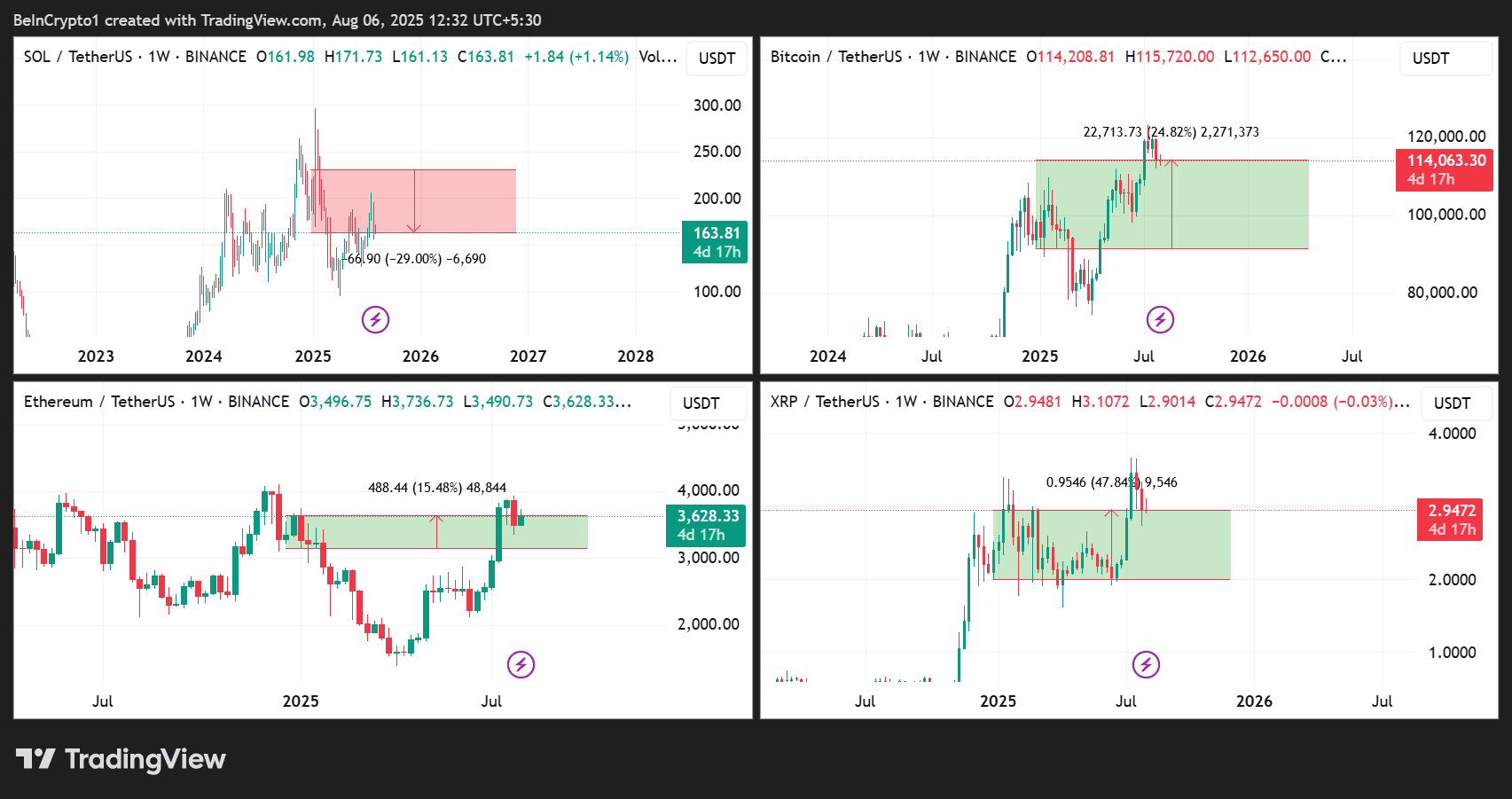
One of the main reasons weakening Solana's growth narrative is the rise of the DEX Hyperliquid. Once the 'irreplaceable on-chain trading hub', Solana has lost its advantage to Hyperliquid – especially in the perpetual contract trading sector, attracting many high-end users.
"Hyperliquid has taken the entire spotlight from Solana... because they offer a simple yet extremely effective product," says Matthew Sigel, head of digital asset research at VanEck.
Meanwhile, Solana's technology roadmap is facing setbacks. Firedancer – a high-performance client expected to upgrade speed and stability – has not met the committed timelines.
Along with that are internal disputes, the departure of developers, and public conflicts, leading to a decline in community trust. According to Mr. Sigel, it is this technical and personnel instability that may be the reason whales are shifting assets, even though on-chain data still shows positive signals.
However, not all large wallets are withdrawing. A recent analysis from Ted shows a purchase transaction of 12 million USD SOL on Binance, after which this amount of tokens was staked back on Kamino Finance – indicating that there are still whales 'buying the dip'.
Meanwhile, Solana continues to maintain a significant advantage in transaction processing speed, and its ecosystem has matured, no longer revolving solely around memecoins as before. However, to attract financial institutions and large capital flows, the network needs to ensure stability and long-term trust – two factors that Solana's technical roadmap has not fully met.
"Solana needs to focus on communicating not only about technical capabilities but also about long-term stability," Mr. Sigel commented.
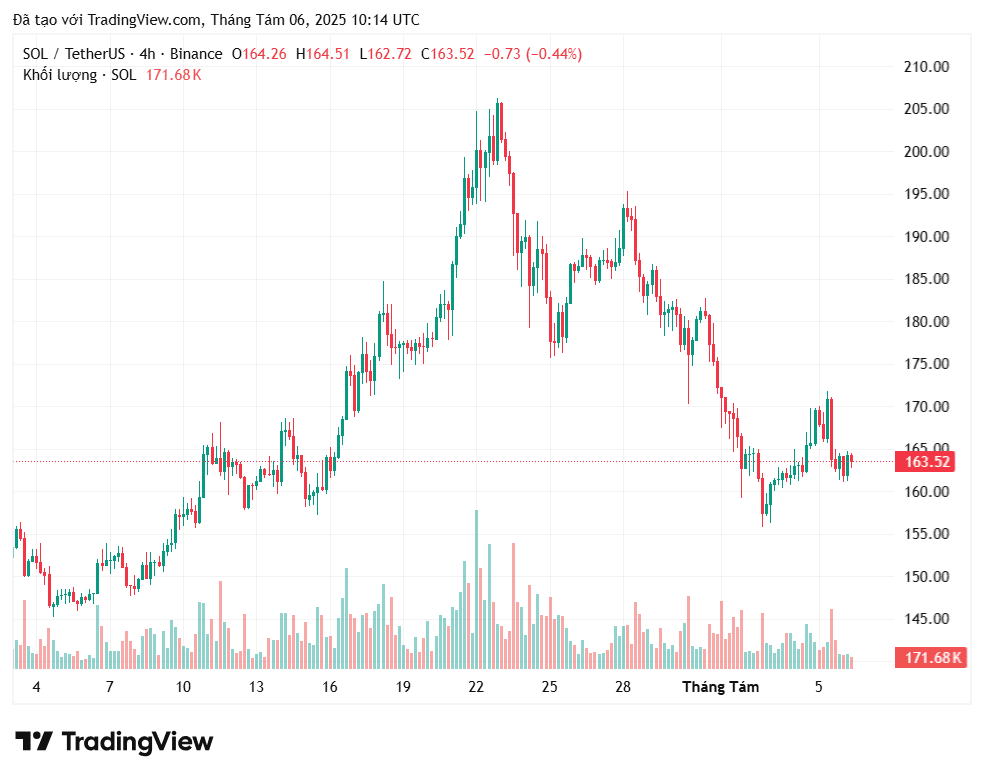
As of the time of writing, SOL is trading at 163.5 USD, down more than 3% in the past 24 hours.
